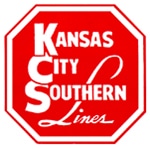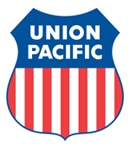Net Earnings: Decreased to $1.131 billion from $1.338 billion.
Revenue: Decreased to $4.602 billion from $5.893 billion.
Operating Income: Decreased to $1.73 billion from $2.007 billion.
Operating Expenses:Decreased to $2.872 billion from $3.886 billion.
Operating Ratio: Improved by 3.7 points to 61.1%.
Link to read BNSF’s full earnings report.
Net Earnings: Decreased to C$908 million from C$1.25 billion.
Earnings Per Share: Diluted earnings per share decreased 59% to C$0.77 from C$1.88 and adjusted diluted EPS decreased 26% to C$1.28 from C$1.73.
Revenue: Decreased 19% to C$3.21 billion from C$3.96 billion.
Operating Income: Decreased 53% to C$785 million from C$1.27 billion.
Operating Expenses: Increased 6% to C$2.42 billion.
Operating Ratio: Declined by 18 points to 75.5%; adjusted operating ratio declined 2.9 points to 60.4% from 57.5%.
Link to read CN’s full earnings report.
Net Earnings: Decreased to C$635 million from C$724 million.
Earnings Per Share: Diluted earnings per share decreased 10% to $4.66; adjusted diluted earnings per share decreased 5% to $4.30.
Revenue: Decreased 9% to C$1.79 billion from C$1.98 billion.
Operating Income: Decreased to C$770 million from C$822 million.
Operating Expenses: Decreased to C$1.02 billion from C$1.16 billion.
Operating Ratio: Improved 140 basis points to 57%.
Link to read CP’s full earnings report.
Net Earnings: Decreased to $499 million from $870 million.
Earnings Per Share: Decreased to $0.65 from $1.08.
Revenue: Decreased 26% to $2.26 billion from $3.06 billion.
Operating Income: Decreased 37% to $828 million from $1.31 billion.
Operating Expenses: Decreased 19% to $1.43 billion from $1.76 billion.
Operating Ratio: Declined 5.9 points to 63.3%.
Link to read CSX’s full earnings report.
Net Earnings: Decreased to $109.7 million from $128.7 million.
Earnings Per Share: Decreased to $1.16 per diluted share from $1.28.
Revenue: Decreased to $547.9 million from $714 million.
Operating Income: Decreased to $180.4 million from $208 million.
Operating Expenses: Decreased to $367.5 million from $506 million.
Operating Ratio: Improved 3.8 points to 67.1% from 70.9%; adjusted operating ratio worsened 1.5 points to 65.2% from 63.7%.
Link to read KCS’s full earnings report.
Net Earnings: Decreased to $392 million from $722 million.
Earnings Per Share: Diluted earnings per share decreased to $1.53 from $2.70.
Revenue: Decreased 29% to $2.1 billion from $2.9 billion.
Operating Income: Decreased to $610 million from $1.1 billion.
Operating Expenses: Decreased 21% to $1.5 billion from $1.9 billion.
Operating Ratio: Worsened to 70.7% from 63.6%.
Link to read NS’s full earnings report.
Net Earnings: Decreased to $1.13 billion from $1.57 billion.
Earnings Per Share: Decreased to $1.67 per diluted share from $2.22 per diluted share.
Revenue: Decreased 24% to $4.2 billion from $5.6 billion.
Operating Income: Decreased 28% to $1.13 billion from $1.57 billion.
Operating Expenses: Decreased 22% to $2.59 billion from $3.34 billion.
Operating Ratio: Worsened 1.4 points to 61.0% from 59.6%.
Link to read UP’s full earnings report.
Notes:
- BNSF’s earnings report had not been released as of July 29, 2020. This post will be updated when the information becomes available.
- Operating ratio is a railroad’s operating expenses expressed as a percentage of operating revenue, and is considered by economists to be the basic measure of carrier profitability. The lower the operating ratio, the more efficient the railroad.
- All comparisons are made to 2019’s second-quarter results for each railroad.
- All figures for CN & CP are in Canadian currency, except for earnings per share for CP






 Union Pacific reports best-ever quarterly results for the third quarter of 2013. The railroad reported a net income of $1.15 billion or $2.48 per diluted share for the third quarter. Last year’s figures for the same quarter were at $1 billion or $2.19 per diluted share.
Union Pacific reports best-ever quarterly results for the third quarter of 2013. The railroad reported a net income of $1.15 billion or $2.48 per diluted share for the third quarter. Last year’s figures for the same quarter were at $1 billion or $2.19 per diluted share.